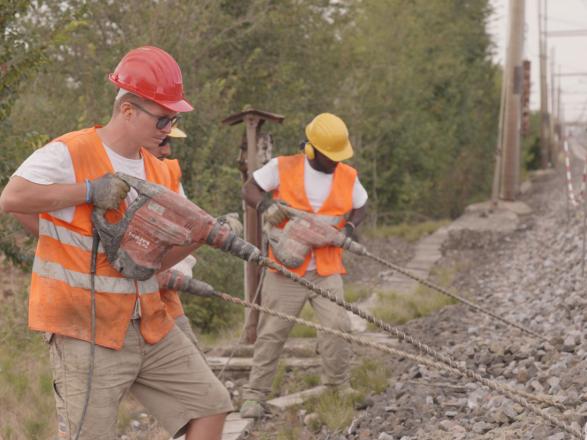Bologna-Rimini Ground Improvement Works – Track Monitoring
Challenge
Failure of railway embankments is becoming more common due to changing weather patterns and increased rail traffic. Failures can cause settlement and gradual changes in track geometry, or more catastrophic voids and loss of support.
On a particular section of embankment along the Bologna-Rimini Railway Line, visible settlement was observed. The method to correct this uses a new stabilisation technique to mitigate settlement and selectively lift the track. This restores the geometry of the trackbed in order to meet the requirements of high speed railways. The process involves injecting expansive geo-polymer resin under the embankment at the points where movement has occurred, to improve foundation soils and prevent further movement.
Solution
Before Uretek could start the controlled injection of expansive resin they needed to implement a rail condition monitoring system to ensure that trackbed movement stayed within acceptable levels. They wanted an easy to install, near real-time monitoring system that could detect small changes in track geometry with minimal disruption to trains.
Uretek installed 24 FlatMesh™ High-G Triaxial Tilt Sensor nodes (IXH) with repeatability of ±0.0025°, using trackbed plates and adhesive glue on sleepers. A total of four FlatMesh™ communication Gateways were needed due to the large spacing of the tilt sensor nodes along the track, in order to collate and forward data from the sensor network to the data viewing platform.
Data from the triaxial tilt sensors was used to monitor movement of the track throughout the works, including heave/settlement, cant and twist.
The team was able to see results on their tablets based on updates every 30 seconds.
Outcome
The data visualization platform, WebMonitor™, was set up to provide a bespoke view of the sensors along the track and alerts were programmed to notify the team if movement breached design limits. By referring to the near realtime data updates the team was able to carry out the injection works and respond to changes in track geometry with sufficient speed and precision to avoid any movement outside acceptable levels.
This smart approach enabled safer working and accelerated the ground improvement process - therefore reducing disruption to the train service.
Watch the video (Italian) Bologna-Rimini Ground Improvement Works - Track Monitoring - YouTube
Downloads
Created on: Wed 17th Nov 2021

Key Points
- Injection stabilisation was needed to lift points along a high speed commuter rail in Northern Italy where visible settlement had occurred.
- Monitoring solution was needed to measure track movement during these works.
- Data from triaxial tilt sensors was viewed by the team on site so they could respond to changes in track geometry with sufficient speed and precision to avoid movements outside acceptable levels.















